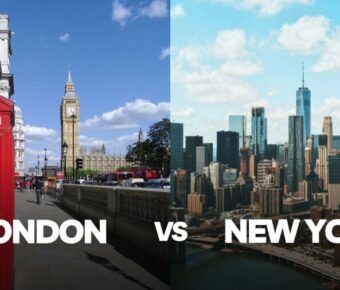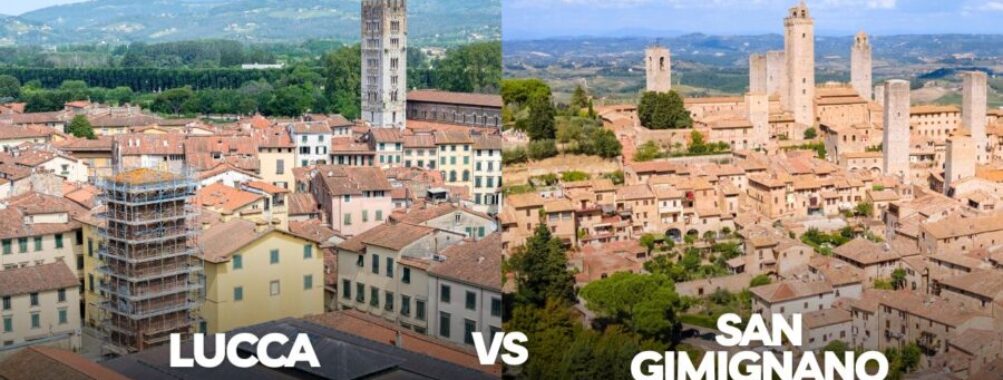
Lucca vs San Gimignano: Which Enchanting Tuscan Town Should You Visit First in 2025
Two of Tuscany’s most captivating destinations draw visitors year after year: Lucca and San Gimignano. Each offers a unique glimpse into Italian history and culture, but with very different atmospheres. Lucca is a larger, livable city known for its intact Renaissance walls and bike-friendly paths. At the same time, San Gimignano stands out as a smaller medieval hill town famous for its striking towers and classic Tuscan views.
These gems of Italy showcase different sides of Tuscany’s charm. Lucca buzzes with local life, filled with peaceful piazzas and hidden churches where tourists mix naturally with residents. Meanwhile, San Gimignano takes visitors back in time with its medieval towers and narrow stone streets, though it sees more tourists during peak times.
A traveler’s choice between these towns often comes down to personal style – those seeking an authentic slice of modern Italian life prefer Lucca. At the same time, medieval history buffs and photography enthusiasts gravitate toward San Gimignano’s dramatic architecture and hilltop setting.
Table of Contents
- Historical Context and Heritage
- Lucca’s Antique Roots
- San Gimignano’s Medieval Magnificence
- Cultural Significance and Attractions
- Lucca’s Cultural Tapestry
- San Gimignano’s Towering Skyline
- Day Trip Recommendations
- Day Trips from Lucca
- Exploring Beyond San Gimignano
- Culinary Experiences
- Lucca’s Delicacies
- San Gimignano’s Gastronomy
- Leisure and Recreational Activities
- Lively Leisure in Lucca
- San Gimignano’s Relaxing Rhythms
- Accommodations and Logistics
- Staying in Lucca
- San Gimignano Stay Options
- Visitor’s Practical Tips
- Tips for Lucca
- Advice for San Gimignano
- Frequently Asked Questions
- How do travel times compare when visiting Lucca versus San Gimignano?
- Can you recommend whether Lucca or Siena is better for a day trip?
- What unique attractions does San Gimignano offer that contribute to its worth as a travel destination?
- In terms of historical and cultural experiences, how does visiting Lucca differ from touring Siena?
- Are there any lesser-known facts highlighting why Lucca is a must-visit location in Italy?
- What hidden gems in San Gimignano could enrich a traveler’s experience compared to other Tuscan towns?
- Book Your Dream Experience
- More Travel Guides
Historical Context and Heritage

Both cities showcase remarkable layers of Tuscan history spanning different periods. Lucca keeps its Roman and medieval roots alive through preserved architecture, while San Gimignano stands as a testament to medieval wealth and power through its famous towers.
Lucca’s Antique Roots
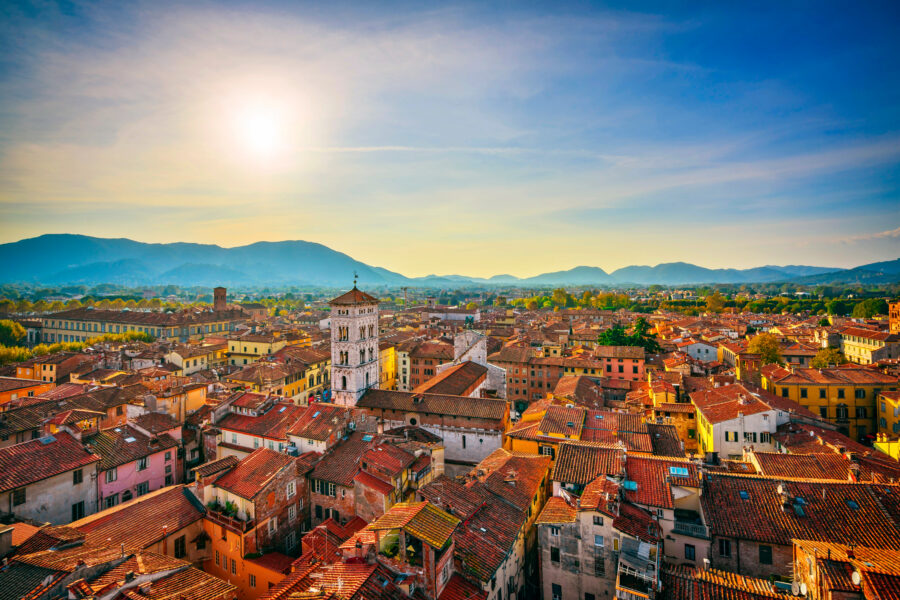
Lucca’s ancient beginnings trace back to Etruscan times, but the Romans shaped its distinctive grid layout that remains visible today. The city’s most treasured relic is the Volto Santo, a cedar-wood crucifix that arrived in 782 CE and rests in the city’s cathedral.
The city’s medieval walls tell a unique story. Unlike other Tuscan towns, Lucca’s walls weren’t built during medieval times – they came later and served more as a status symbol than for defense.
Religious architecture plays a big role in Lucca’s heritage. The Church of San Michele and San Francesco represent prime examples of medieval religious buildings that still define the cityscape.
San Gimignano’s Medieval Magnificence

San Gimignano began as a small village in 988, growing around a church and castle named after its patron saint. After joining forces with Florence, the town hit its golden age in the medieval period.
During the 1300s, wealthy families competed to build tall towers – a medieval version of today’s skyscrapers. These towers served as homes and fortresses, showing off their owners’ wealth and power.
The town’s strategic position along trade routes helped it prosper. Merchants made fortunes trading local wine and saffron, using their wealth to construct the impressive towers that still define San Gimignano’s skyline today.
The narrow medieval streets and stone buildings remain almost unchanged since their construction, creating a living museum of medieval architecture and urban planning.
Cultural Significance and Attractions

Lucca and San Gimignano are two of Tuscany‘s most remarkable cities, each offering unique cultural treasures that transport visitors back to medieval Italy. Their distinct architectural styles and artistic heritage create unforgettable experiences for travelers.
Lucca’s Cultural Tapestry
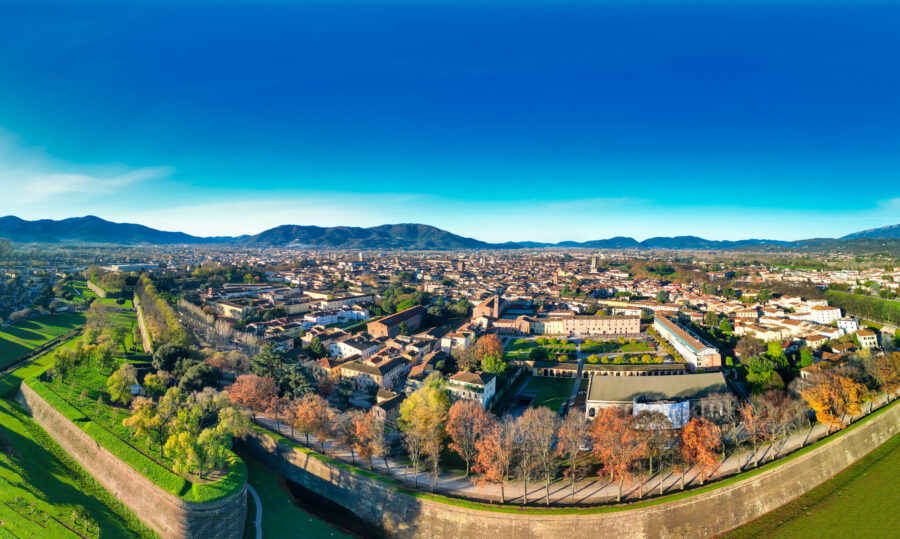
The birthplace of composer Giacomo Puccini draws music lovers from around the world. His home is now a museum where you can see his original piano and personal items.
Via Fillungo, the main shopping street, buzzes with life and showcases beautiful medieval architecture. Local shops sell traditional goods in centuries-old buildings.
The Piazza Anfiteatro amazes visitors with its oval shape, built on the ruins of an ancient Roman amphitheater. Restaurants and cafes now line this unique space where gladiators once fought.
Lucca’s churches display incredible art and architecture. The San Martino Cathedral houses the famous Volto Santo crucifix and intricate marble work, which shows local craftsmanship.
San Gimignano’s Towering Skyline
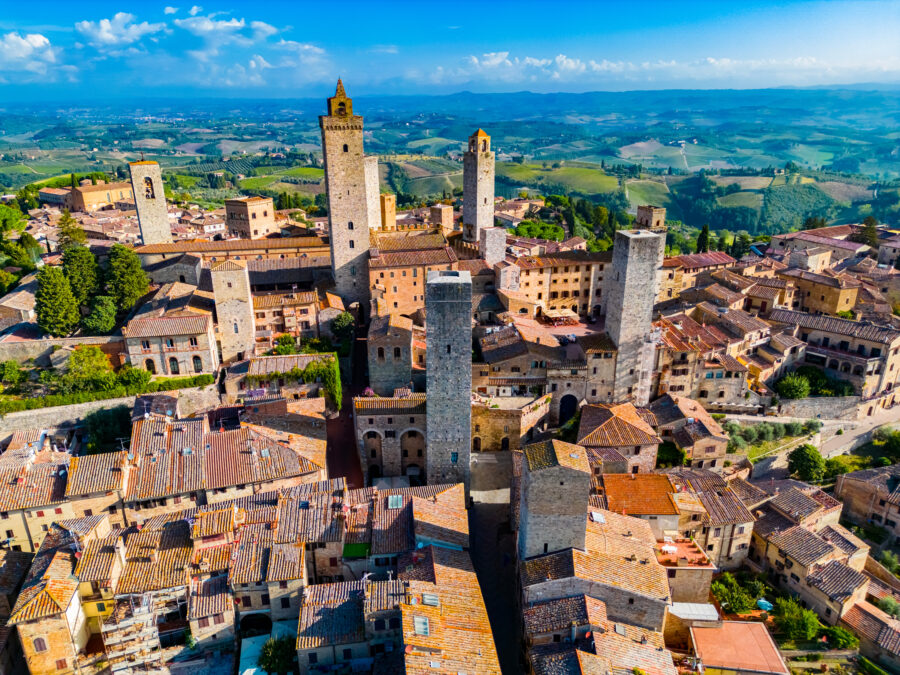
The 14 remaining medieval towers define San Gimignano’s famous skyline. These towers, once numbered 72, were built by wealthy families to demonstrate their power and status.
The town earned the nickname “Medieval Manhattan” thanks to its unique tower-filled profile. You can climb Torre Grossa, the tallest tower, for amazing views of the Tuscan countryside.
The historic center earned UNESCO World Heritage status for its medieval architecture and urban design. Narrow stone streets wind between the towers, creating a maze of authentic medieval paths.
The town’s churches contain beautiful frescoes. The Collegiate Church features colorful biblical scenes that cover entire walls, painted by some of Italy’s most talented medieval artists.
See Related: Siena vs San Gimignano: Which Enchanting Tuscan Town Should You Visit First?
Day Trip Recommendations
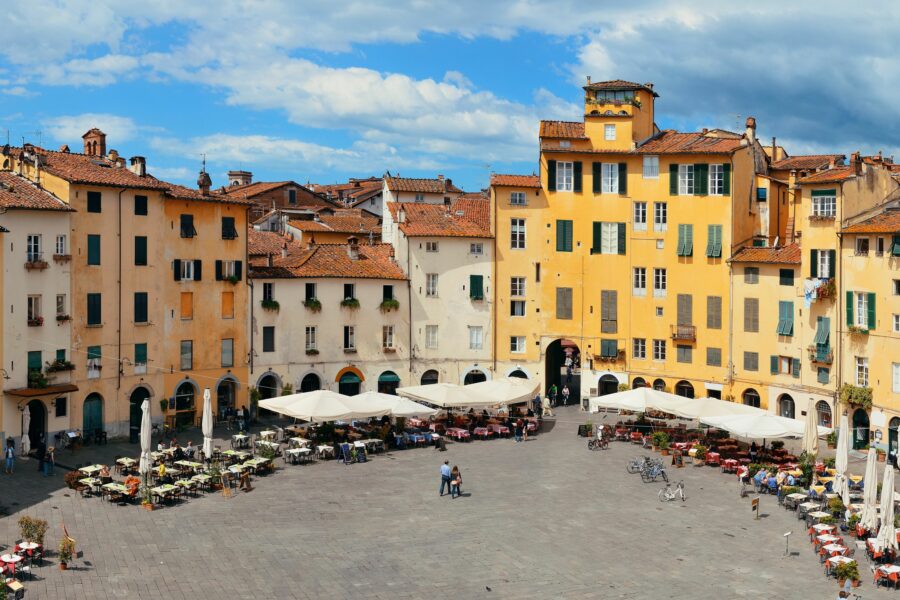
Lucca and San Gimignano are excellent bases for exploring the beautiful Tuscan region. Many travelers choose these charming towns as starting points for unforgettable adventures through rolling hills and historic cities.
Day Trips from Lucca
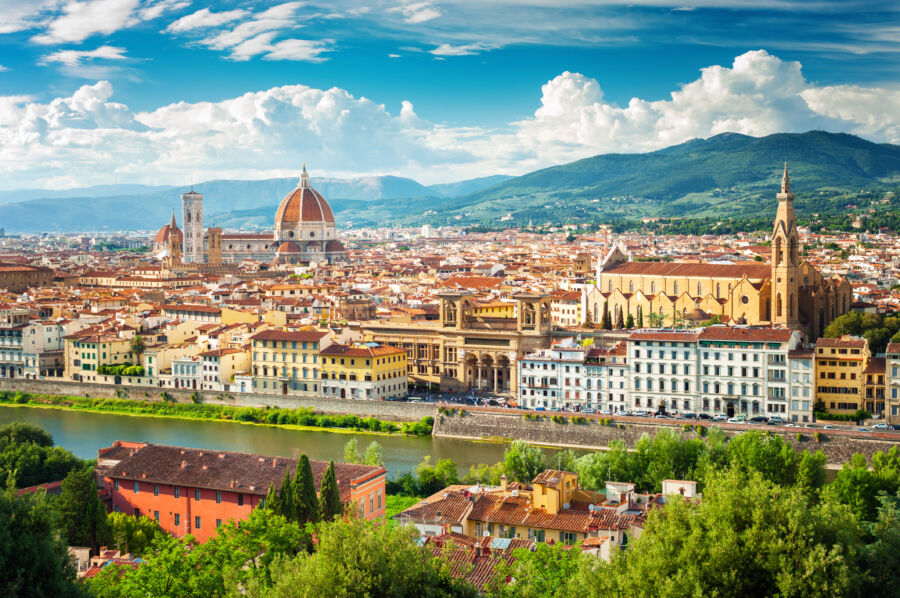
The walled city of Lucca is a perfect spot for exploring northern Tuscany. A quick 30-minute train ride takes visitors to the iconic Leaning Tower of Pisa. The journey is simple, and trains run frequently throughout the day.
Florence is another fantastic day trip option from Lucca. The high-speed trains take about 1.5 hours to reach the city, giving plenty of time to see major attractions like the Uffizi Gallery and Duomo.
Many travelers enjoy taking organized wine tours to the nearby Chianti region. These excursions often include stops at family-owned vineyards and medieval villages.
Exploring Beyond San Gimignano

San Gimignano’s central location makes it ideal for exploring southern Tuscany. The medieval city of Siena lies just 45 minutes away by bus, with its stunning Piazza del Campo and twice-yearly Palio horse race.
The ancient Etruscan town of Volterra sits 30 minutes west. Its well-preserved Roman theater and mysterious alabaster workshops attract history lovers.
Taking guided tours through the Chianti countryside lets visitors experience local wine culture. Many tours include stops at family wineries and traditional Tuscan lunch spots.
Culinary Experiences
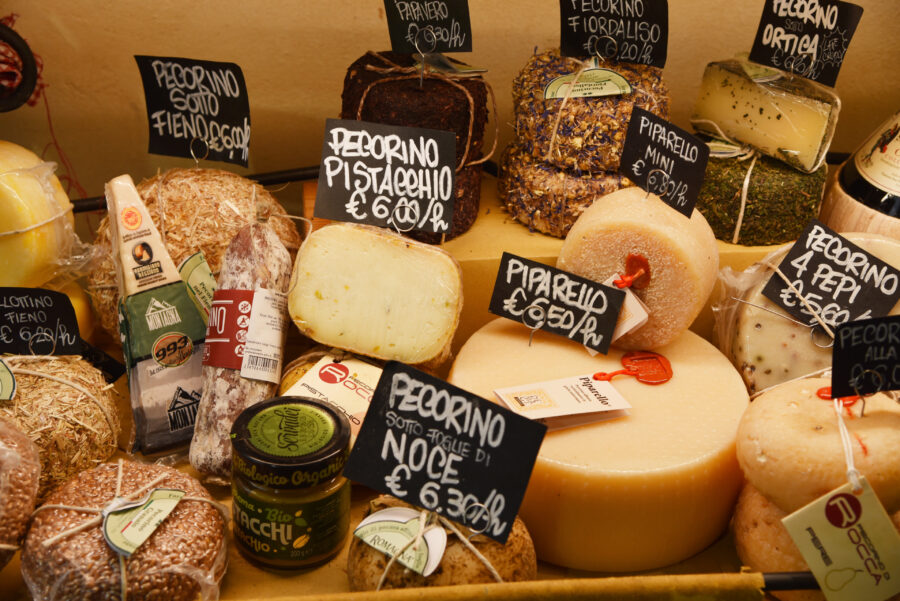
Tuscany’s charming towns offer distinct food traditions that showcase regional ingredients and time-honored recipes. The local specialties range from handmade pasta to aged meats and world-class wines.
Lucca’s Delicacies

Lucca’s food scene centers around rich pasta dishes and hearty meat-based meals. The city is famous for its tortellini lucchesi, meat-filled pasta served in a savory meat sauce. You’ll find this local favorite in trattorias throughout the historic center.
The streets are lined with small bakeries selling buccellato, a sweet bread flavored with anise and raisins. This ring-shaped treat makes a perfect morning snack with coffee.
Local restaurants serve garmugia, a springtime soup made with artichokes, fava beans, peas, and asparagus. The dish reflects Lucca’s connection to fresh, seasonal ingredients.
San Gimignano’s Gastronomy
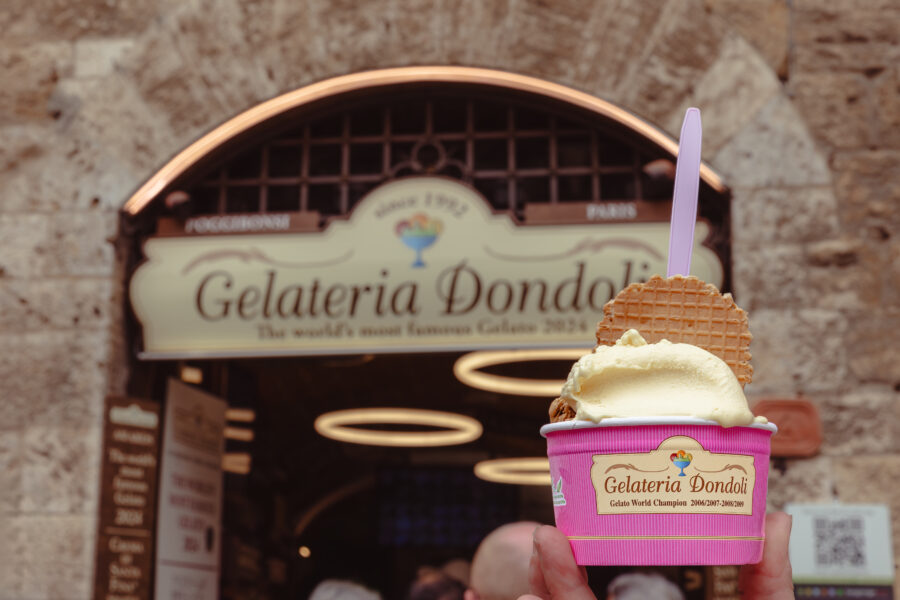
San Gimignano proudly produces some of Italy’s finest saffron, which local chefs use in risottos and pasta dishes. The town’s signature white wine, Vernaccia di San Gimignano, pairs perfectly with the local cuisine.
Gelateria Dondoli is a must-visit spot. It serves unique flavors, like saffron gelato, and the shop has won multiple world championships for its creative combinations.
Traditional restaurants offer wild boar ragu served over fresh pici pasta. Many eateries source their ingredients from nearby farms, including local olive oils and aged pecorino cheese.
Leisure and Recreational Activities
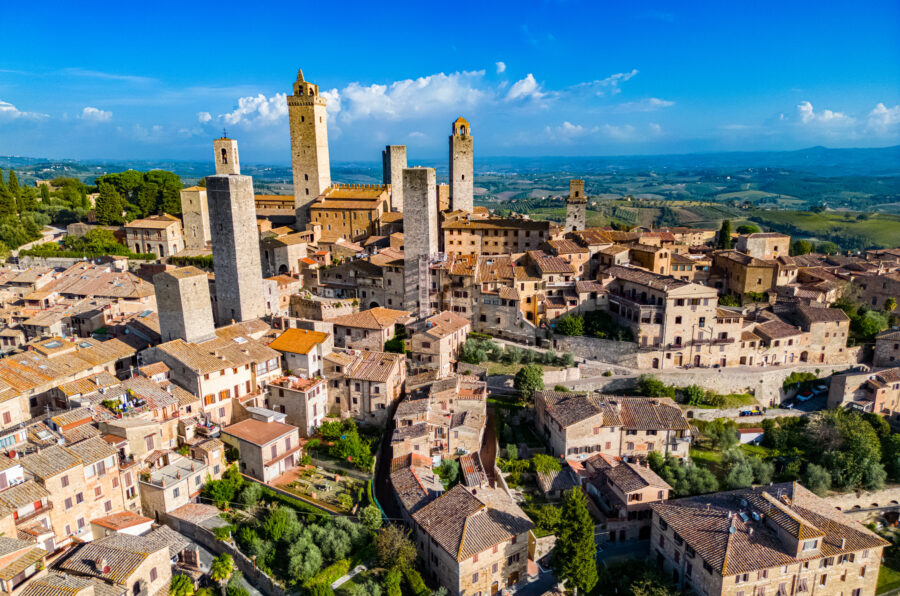
Lucca and San Gimignano offer distinct ways to spend your leisure time, from active pursuits to peaceful relaxation spots that showcase their unique medieval character.
Lively Leisure in Lucca
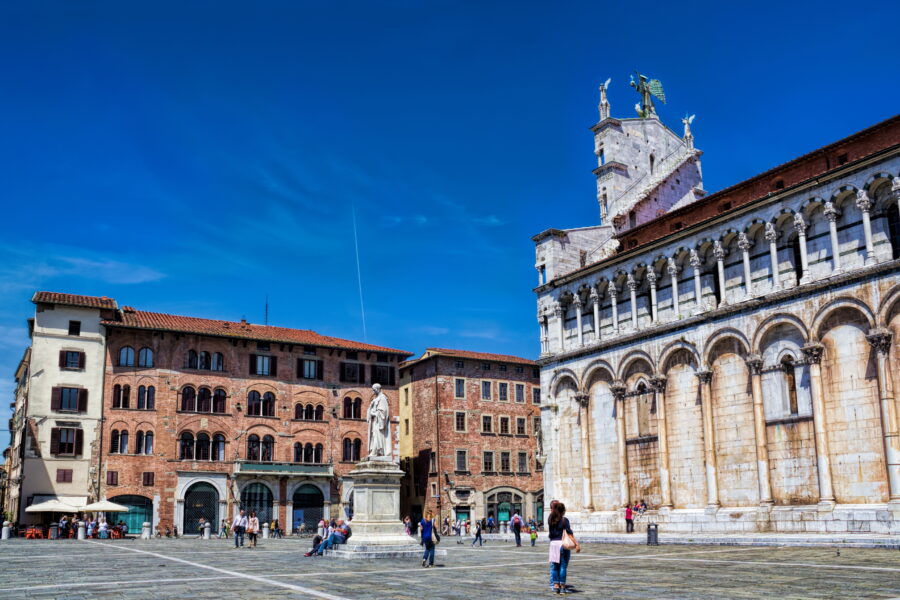
The ancient city walls of Lucca transform into a 4-kilometer recreational path perfect for cycling or walking. You can rent bikes near Piazza San Michele to explore the wall’s tree-lined promenade.
The bustling Piazza San Michele serves as a social hub where visitors gather at outdoor cafes. Street musicians often perform here, creating a festive atmosphere.
Shopping enthusiasts will love Via Fillungo, Lucca’s main shopping street. This medieval lane features boutiques, artisan shops, and specialty food stores selling local olive oil and wines.
San Gimignano’s Relaxing Rhythms

The narrow medieval alleys of San Gimignano invite visitors to take peaceful morning walks before the day-trippers arrive. These quiet moments offer the best views of the famous towers.
Local wine shops offer tastings of the region’s famous Vernaccia white wine. Many shops provide terraces with stunning views of the Tuscan countryside.
The town’s smaller size makes it perfect for evening strolls when most tourists leave. You’ll find charming gelato shops and cafes in hidden corners where you can watch the sunset paint the medieval towers in golden light.
See Related: Italian Fashion: What to Wear in Italy (Complete Guide)
Accommodations and Logistics
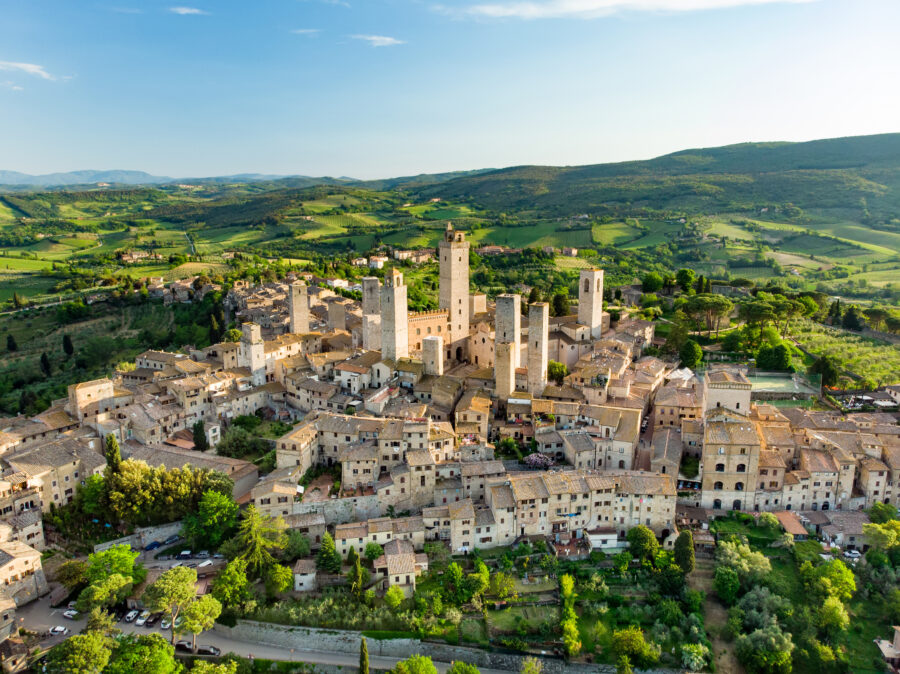
Both towns offer distinct lodging experiences, with Lucca providing more variety near public transport and San Gimignano focusing on charming historic properties within its walls.
Staying in Lucca
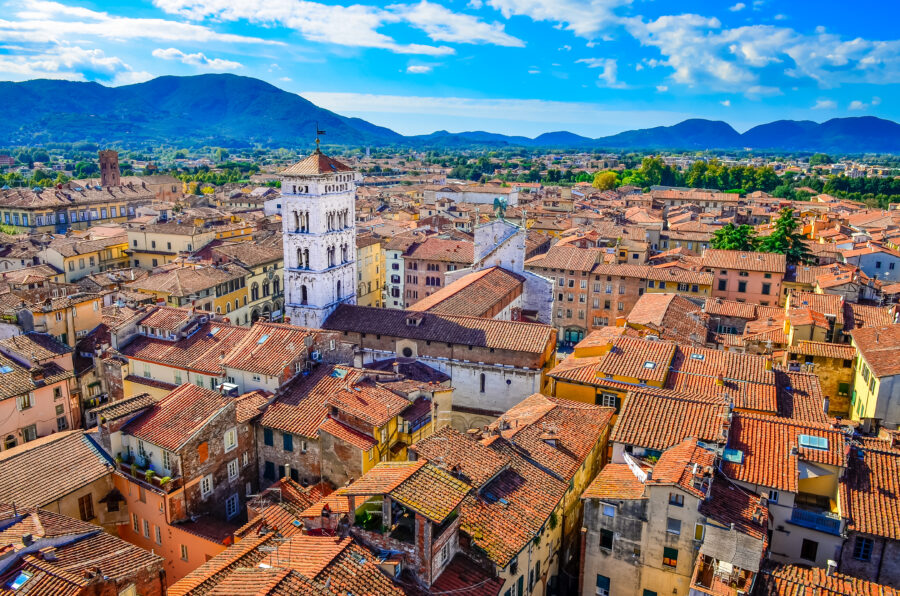
Lucca shines with its mix of boutique hotels and apartments scattered throughout the walled city. The train station sits just outside the walls, making it easy to reach accommodations with luggage.
Most hotels are in restored medieval buildings along the main streets. Many features have original architectural details, such as wooden beams and stone walls.
Budget travelers can find good deals in the newer areas outside the walls. These spots offer free parking and quick access to public transport.
San Gimignano Stay Options

San Gimignano’s historic properties tend to be pricier than Lucca’s, but they deliver unforgettable views of the Tuscan countryside and medieval towers.
Most options within the town walls are small, family-run hotels. Many include breakfast in charming courtyards or rooftop terraces.
Farmhouses and agriturismos dot the hills around town. These rural stays often include pools and wine tastings.
Parking can be tricky near central hotels. Most properties direct guests to designated lots outside the walls.
Visitor’s Practical Tips
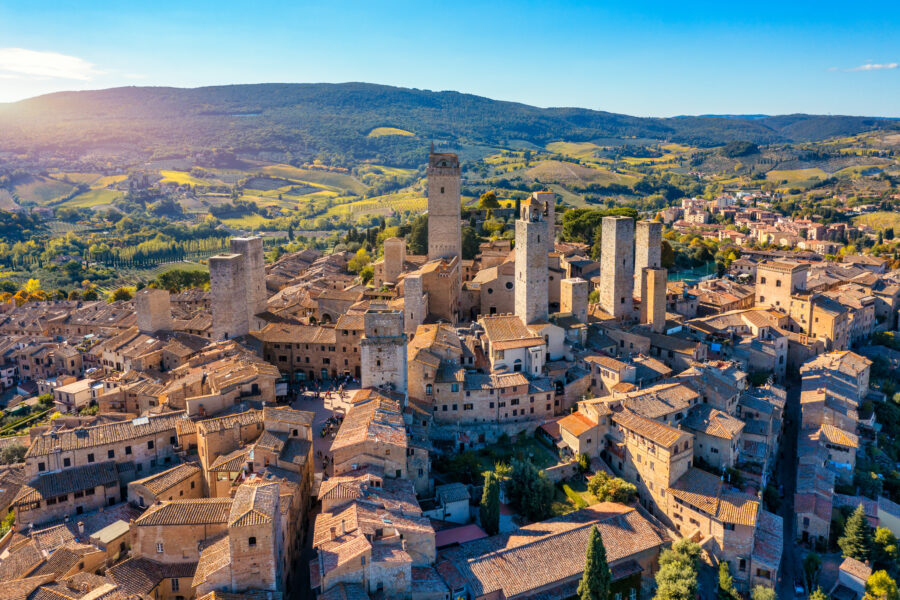
Both towns need thoughtful planning to make the most of your visit. Each has unique features that shape how you’ll spend your time and money.
Tips for Lucca
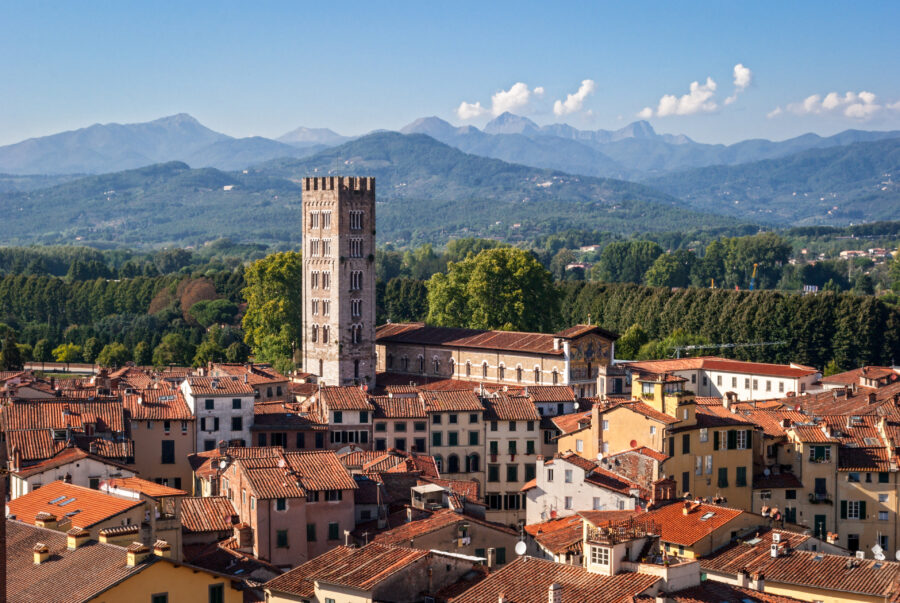
Pack comfy shoes – you’ll need them for walking the 4km city walls. Rent a bike from shops near the walls to explore faster and have more fun. The best time for wall walks is early morning or sunset when it’s cooler.
Parking is easiest at the lots outside the walls. You can also save money using the free lots near Porta Santa Maria.
Street markets pop up on Wednesdays and Saturdays. Visit these for local foods and crafts at reasonable prices.
Many shops close from 1-4 PM for a lunch break. Plan shopping trips around these hours.
Advice for San Gimignano
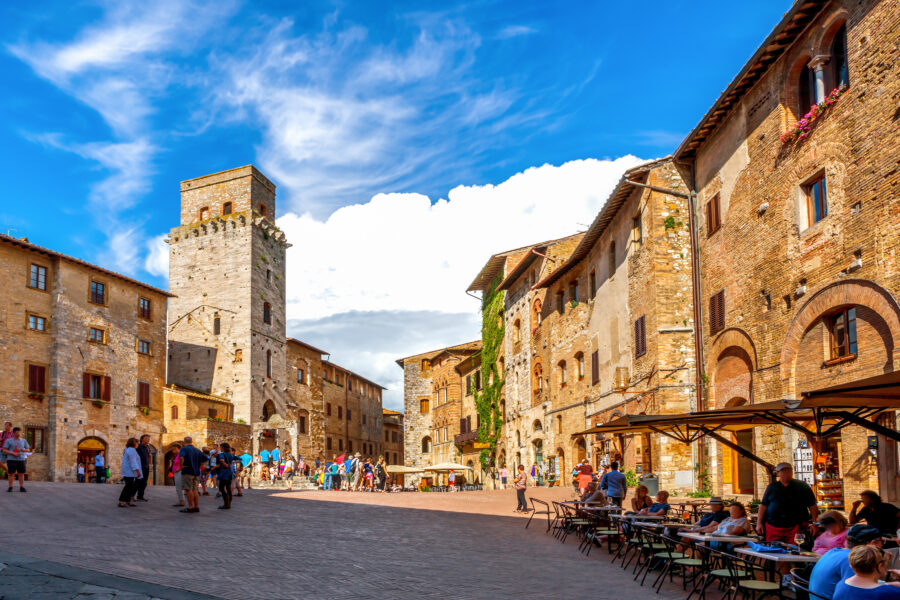
Get there early! Day-trippers fill the town by mid-morning. Arrive before 9 AM to enjoy the medieval streets in peace.
Book a hotel inside the walls if you can. The town is magical at night after the crowds leave.
The best views of the towers are from Rocca di Montestaffoli. However, there is little shade up there, so bring water and sun protection.
Try the world-famous gelato at Gelateria Dondoli in Piazza della Cisterna. Go during off-peak hours to avoid long lines.
Watch for the tourist menu traps. The best restaurants are on the side streets away from the main square.
See Related: Pisa vs San Gimignano: Which Stunning Tuscan City Should You Visit First?
Frequently Asked Questions
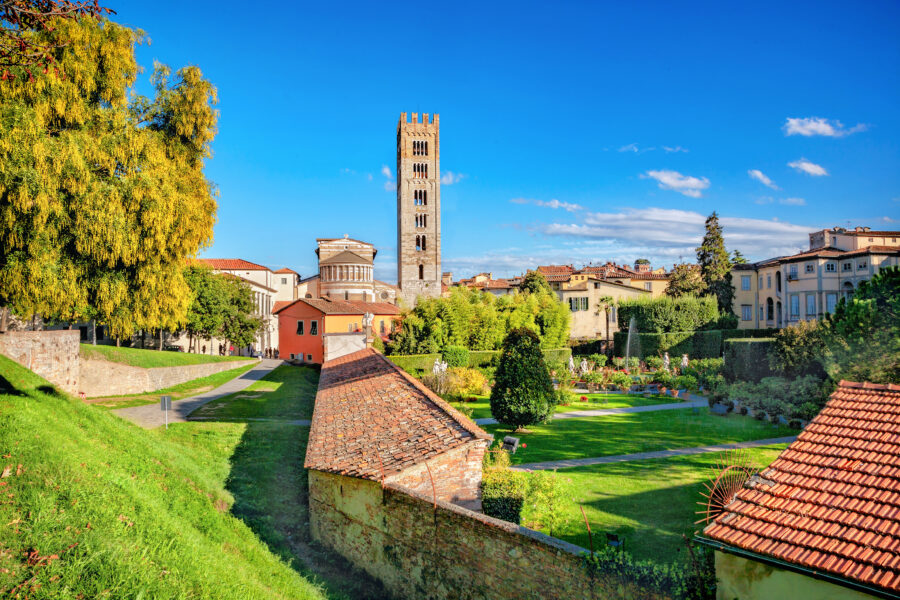
Tuscany’s historic towns offer distinct travel experiences, from medieval architecture to local cuisine and cultural attractions that shape memorable visits.
How do travel times compare when visiting Lucca versus San Gimignano?
Lucca is easier to reach by train, with direct connections from Pisa taking about 30 minutes. The station sits right outside the city walls.
Meanwhile, San Gimignano has no train station, requiring more planning. Most visitors take a bus from Florence or Siena, which takes 1-1.5 hours.
Can you recommend whether Lucca or Siena is better for a day trip?
Lucca is great for independent travelers because its flat layout and bike rentals make exploring simple. The intact Renaissance walls create a perfect 4-km cycling loop.
On the other hand, Siena needs more time to explore due to its steep hills and spread-out attractions. Its gothic architecture and famous Piazza del Campo demand at least a full day.
What unique attractions does San Gimignano offer that contribute to its worth as a travel destination?
The 14 medieval towers create an unforgettable skyline that earned San Gimignano its nickname “Medieval Manhattan.”
The town’s narrow alleys and ancient buildings transport visitors back in time. Its hilltop location provides stunning views of the Tuscan countryside.
In terms of historical and cultural experiences, how does visiting Lucca differ from touring Siena?
Lucca’s Roman street grid and Renaissance walls showcase its evolution across different eras. The city feels lived-in rather than tourist-focused.
Its churches house essential artworks, and the oval Piazza dell’Anfiteatro follows the shape of an ancient Roman amphitheater.
Are there any lesser-known facts highlighting why Lucca is a must-visit location in Italy?
Lucca’s locals still use the tree-lined city walls as their central park and gathering space, making it a glimpse into authentic Italian life.
The city was never conquered during the Renaissance, which explains why its walls remain preserved today.
The town’s world-famous gelato shop, Gelateria Dondoli, has won multiple world championships for its unique flavors like saffron and pine nuts.
The less-visited Chiesa di Sant’Agostino contains beautiful frescoes that rival more famous churches without the crowds.



